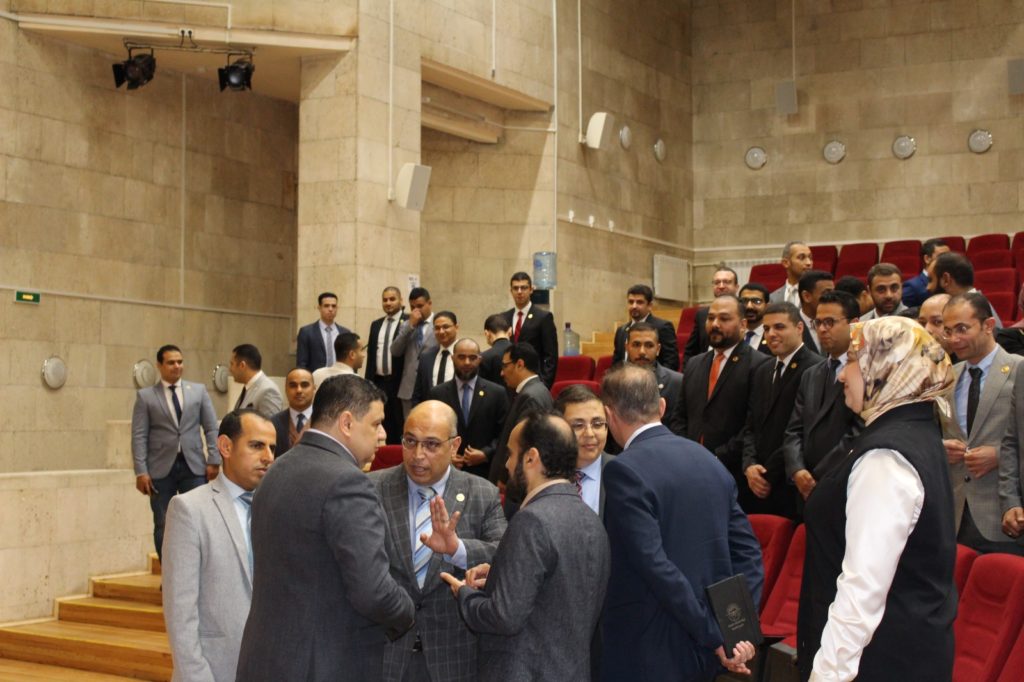
Dynamic Construction
back to contentsConstruction works at El Dabaa are fully on schedule. A construction permit for the fourth unit may be obtained by the end of the year. This was announced by Rosatom’s Chief Alexey Likhachev during his visit to the site in late July.
Alexey Likhachev met with Mohamed Shaker, Minister of Electricity and Renewable Energy of Egypt, and Amged El-Wakeel, Chairman of the Board of the Egyptian Nuclear Power Plants Authority (NPPA). Together, they inspected the construction site and visited the seaport built for the nuclear power plant. During the visit, Likhachev, Shaker and El-Wakeel were updated on the progress in construction works at the first three power units and preparations at Unit 4.
“The construction of the first three units of El Dabaa NPP is running right on schedule. Preparatory works are underway at the Unit 4 site. By the end of this year, we expect to obtain a construction license for the fourth unit from the national regulator, the Egyptian Nuclear and Radiological Regulatory Authority. After that, we will be able to proceed with the first concrete pouring, which will signal the beginning of the main phase of construction at Unit 4,” Alexey Likhachev said.
The Rosatom Director General and the Egyptian Minister of Energy took part in the inauguration ceremony for the NPPA administrative building on the nuclear plant site.
Mohamed Shaker praised the strong relations between Egypt and Russia. He recalled that the history of bilateral relations dates back to the 1950s when the Soviet Union assisted Egypt in the construction of the Aswan Dam, steel-making facilities in Hilwan and an aluminum plant in Nag Hammadi. Furthermore, it was the Soviet Union that supplied Egypt with its first research reactor, which was launched in 1961.
Amged El-Wakeel acknowledged that NPPA was making every possible effort to build El Dabaa in compliance with the applicable nuclear safety standards. Speaking about the current year highlights, he noted the delivery of a core catcher for Unit 1, the first piece of long-lead equipment, to the construction site in March and the first concrete pouring at Unit 3 in May. According to El-Wakeel, the core catcher is scheduled to be installed this autumn. This will be the first piece of nuclear equipment emplaced at Unit 1. Measuring 6.1 meters in diameter, this cone-shaped steel structure is an innovation of Russian nuclear engineers and a key element of the passive safety system in the VVER‑1200 reactor. In case of a core meltdown, the core catcher safely retains corium fragments and keeps them inside the reactor containment.

In early August, NPPA organized an inspection visit to Unit 4 to check if the site is ready for pouring the first concrete for the reactor island foundation slab. The inspection team included representatives of the ENRRA and VO Bezopasnost, which provides technical consultancy services to the Egyptian regulatory authority.
The on-site inspection was conducted as part of the predetermined supervisory procedures preceding the issuance of a construction permit. The inspectors reviewed the design documents needed for the start of construction works and confirmed their compliance with the regulatory requirements. Inspections were also carried out at the concrete batching plant and material testing laboratories to make sure the site infrastructure at Unit 4 is ready for the construction works to begin.
The inspection team confirmed that NPPA and AtomStroyExport (a part of Rosatom) had done a good job in preparing the site for the first concrete pouring. The inspectors also noted they relied on the experience gained from similar inspections at Units 1, 2 and 3.




